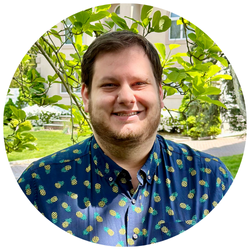"Perfectionism is the voice of the oppressor, the enemy of the people. It will keep you cramped and insane your whole life, and it is the main obstacle between you and a shitty first draft."
Anne Lamott
First drafts will never be perfect; this is not a remark to demoralize writers but a sincere reminder of actuality.
Writers and editors have typed, erased, rewritten, and edited the article you are reading. We have transformed the first unkempt draft into a more refined set of ideas.
That's a critical part of the writing process. So focusing on getting it perfect the first time? That's not only impossible — it's going to hinder your progress.
Let's explore the concept of perfectionism — only accepting something free of all flaws — and learn how overcoming that view of your work could be the most significant step you take on your writing journey.

Overcoming a Fear of Failure
Many writers strive for perfection. We repeatedly set unrealistically high bars that set us up for future failure. Ironically, we strive for perfection because of our internal fear of failure.
Ensuring that every word we put on the page is perfect, we reason, will decrease our chances of being judged or criticized.
But that's just not reality.
The competitive progress-based society we live in doesn't help either. In a world where success and high achievement are valued, presenting a work less than perfect feels akin to defeat. Just turn on the news, browse social media, or chat with colleagues to quickly see how we relentlessly showcase (seemingly) flawless success. (Spoiler alert: That's not real, either.)
The biggest problem is that perfectionism is like a drug for those who find joy in external validation. We set the power of validation in individuals around us rather than ourselves. Of course, this is harmful, as it's impossible for any large mass of people to unanimously view an author or story as perfect.
The danger in this search for perfection is that it interrupts our creative process, and we never finish — or start! — a project at all.
Even Stephen King, who has published over sixty novels, ten short story collections, and five non-fiction works, continues to receive his share of ridicule. How does he break through the fear of failure to create anyway?
"You can't please all the readers all the time; you can't even please some of the readers all the time, but you should at least try to please yourself."
Stephen King
Attacking Perfectionism Head-On
As in many mental battles, the most important — and challenging — move is simply to let go. Transform the idea of perfectionism into improvement.
By focusing on perfectionism, we create a mental space where we over-process and find ourselves in worlds of indecision — we block out the sun and cease to grow, diminishing our potential.
Prevent this by embracing a growth mindset. Start by setting achievable goals and realistic deadlines for your writing. Focus on just drafting, not editing as you go.
We recommend learning how to freewrite. Peter Elbow, an English professor focusing on writing theory and practice, popularized writer Ken Macrorie's initial notion — don't worry about perfectionism; just get words on the page.
To do this, a writer shuts off the critical part of their brain (aka the inner critic) and focuses on exploring inner creativity. When freewriting, the writer doesn't stop to research or go back and edit — they just write.
Write first and come back later to edit; the key to overcoming perfection is to create a distinction between these two different steps of the writing process.
Write first and come back later to edit; the key to overcoming perfection is to create a distinction between these two different steps of the writing process.
Your Journey with Freewriting
If you're having trouble separating the writing process from the editing process, you may benefit from a purpose-designed tool like the Freewrite Smart Typewriter.
We also recommend starting with our FREE ultimate guide to freewriting!





























